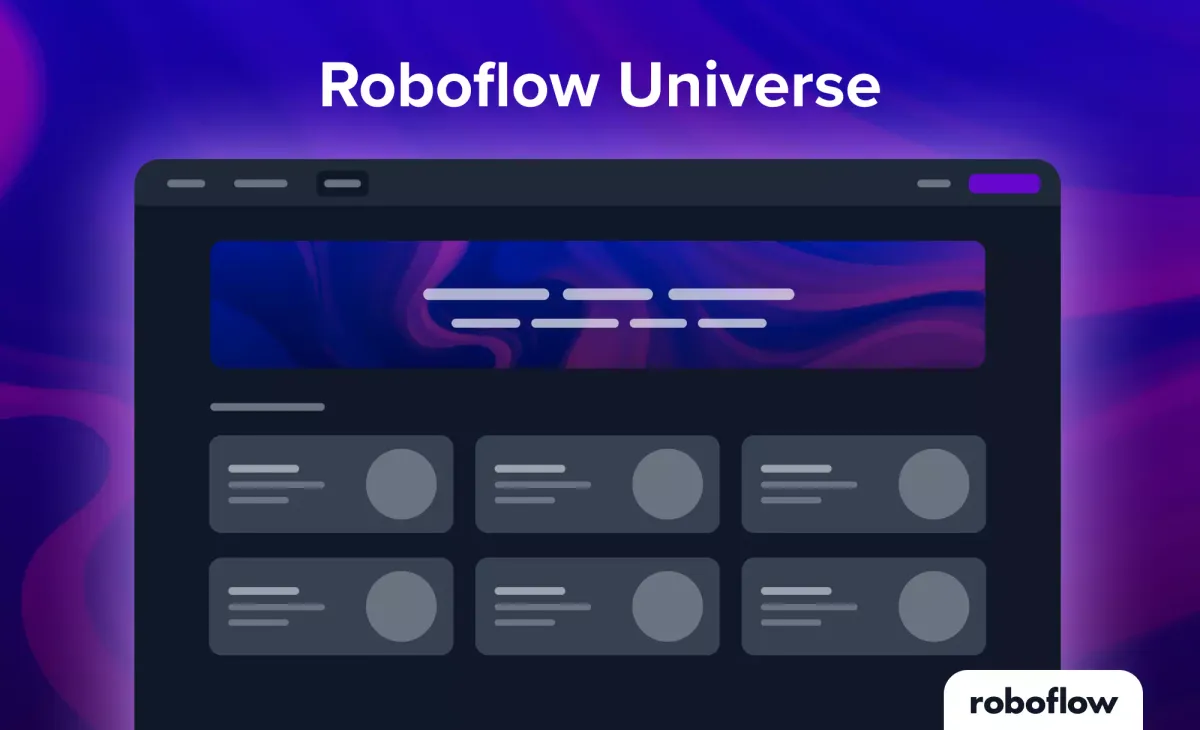
We’re excited to introduce Roboflow Universe, the new hub for computer vision datasets and pre-trained models. We're launching with fifty open source projects shared by launch partners ranging from detecting playing cards to lego bricks to pills. The datasets are open source and the models are ready to be used in your projects via open APIs.
Additionally, we're offering all of the advanced features of Roboflow's end-to-end computer vision workflow — including our world-class Annotate, Dataset Management, Augmentation, Training, and Deploy products — free to everyone working on public projects.
Our vision is to democratize computer vision so it can be used seamlessly by every developer. That means breaking down all the barriers that stand in the way. Three of the biggest things standing in the way of broad adoption of state-of-the-art computer vision models are access to relevant datasets, high quality pre-trained models, and standardized deployment options.
Relevant Datasets
Roboflow Universe is designed to be the home of high-quality datasets for every problem. It can be extremely time-consuming and expensive, and the search for high-quality datasets has ended many computer vision projects before they ever started.
Over the past decade, the introduction of public datasets like PASCAL VOC, ImageNet, and COCO have led to breakthrough innovations in research. We believe that an exponential growth of data will empower machine learning researchers to focus on their most unique and valuable skill — creating models, instead of curating data for models.
Imagine the innovations we'll see when there are hundreds of public datasets available for benchmarking. We'll see researchers working on improving detecting objects from satellite photos, counting phages, identifying pills, and finding new galaxies.
Perhaps one day, computer vision models will be measured based on their cross-functional performance across a wide range of disparate datasets instead of being over-optimized for one or two homogenous ones.
Pre-Trained Models
Most of the amazing advancements we've seen in the computer vision world have not been accessible to the vast majority of software developers. There's a steep learning curve to get into AI, and most developers are not data scientists or machine learning engineers.
Roboflow Universe is designed to bridge the gap between the worlds of research and engineering. Extensive knowledge of machine learning is no longer required to use a model in your app.
Every dataset released on Roboflow Universe can be trained using Roboflow Train. Roboflow Train offers a fully abstracted, state-of-the-art computer vision model in a single click. It’s not necessary to dive into the world of neural networks and Jupyter notebooks. Our machine learning experts have optimized things for you.
Standardized Deployment Options
Fitting a great model to your data is usually only the end of the beginning. Transforming it into something that can be deployed into production is an entirely different skill-set.
With Roboflow, that's no longer a problem. Every trained model automatically gets an infinitely scalable cloud API (with SDKs and code snippets available in all of the most popular programming languages) and is optimized to run directly in users' web browsers and on edge devices like the NVIDIA Jetson and Luxonis OpenCV AI Kit (OAK).
If you have more advanced needs, it's also possible to deploy them on-premise (or inside your private cloud) and to the field in configurations that don't require any internet connection at all.
Living Datasets and Self-Improving Models
But the best part is that what we're launching today is only the table stakes. By placing these models into the hands of millions of end-users, the project curators can collect more varied data from edge cases encountered in the wild to improve the datasets (and models) over time.
More people using and contributing to these open projects means they will only improve over time. Future enhancements include public collaboration features like community-contributed images and crowd-sourced annotation.
Try It Out
Roboflow Universe is open for everyone. You can download all of the public datasets and consume the pre-trained models (up to our free-tier inference limit) in your own projects. Just browse for a relevant project via the Universe homepage.
If you’re a corporate user and can't share your company's data, you still can try out Roboflow with our private business Sandbox and upgrade later. You are welcome to explore Universe, and the public datasets can be used to inspire and inform your model.
If you have data you'd like to share, create a free Roboflow account and choose the "Public" plan. You'll enjoy advanced features and increased usage limits in exchange for your contribution to the open data community! Roboflow is pleased to support over 50,000 student and hobbyist users with our free tier. We believe the new Public plan will unlock the power of computer vision for every developer across the globe.
Cite this Post
Use the following entry to cite this post in your research:
Brad Dwyer. (Aug 11, 2021). Roboflow Universe: the Computer Vision Community. Roboflow Blog: https://blog.roboflow.com/universe/
